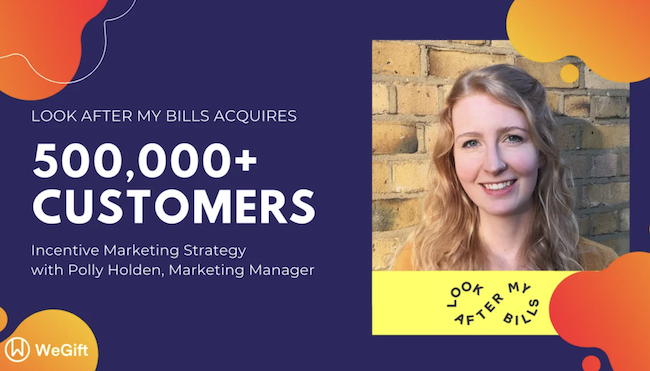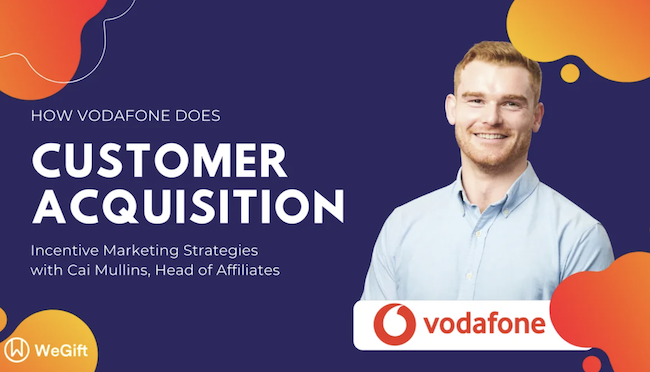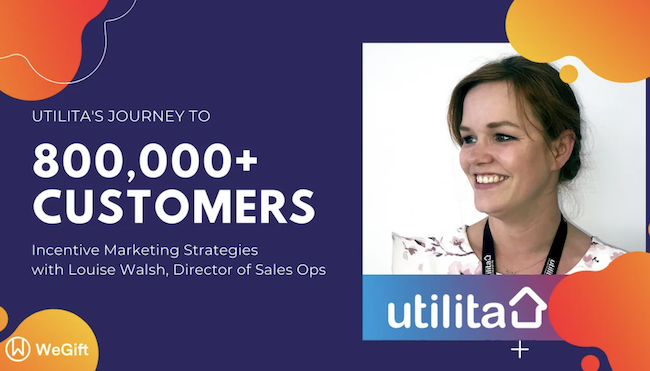Who doesn’t know Vodafone? They’re one of the biggest telecom’s companies globally, with over 625 million customers! One thing’s for sure, their continued growth can be attributed to their dedication to innovation and experimentation.
Recently, they entered the UK broadband market – a new market for them. Find out how incentive marketing helped them take the market by storm.
Free Guide: How to Acquire Customers Rapidly Using Digital Incentives
Meet Cai Mullins, Head of Affiliates and Partnerships
Cai knows the telecommunications market in an out. Prior to his current role at Vodafone, he spent 3 years at BT (British Telecom, taking responsibility for digital sales across Broadband, TV & BT Sport, including Affiliates, Paid Search (PPC), SEO and direct sales.
At Vodafone, his key responsibility is to promote Vodafone’s brand and offerings through affiliate and third party websites. If anyone knows how to acquire customers at scale in the telecoms industry, it’s him.
Vodafone: Established Telecoms Giant Breaking New Ground
Vodafone is well known for its mobile offering around the world. They essentially shaped the mobile telecoms industry over the past 3 decades, from sending the world’s first SMS in 1992 to rolling out London’s cutting edge 5G network.
However, while they are giants in the traditional mobile space, they are breaking new ground in several other markets:
- Home Broadband
- Internet of Things (IOT)
- Mobile Sub-segments
- VOXI – Mobile offering for under 30’s, data heavy users
- Talk Mobile – Entry level mobile offering
For these newer markets, having a strong customer acquisition strategy was crucial. They also had to take into account the changing marketing landscape of the market with new advertising regulations coming into play.
Marketing Evolution: Regulation for Greater Price Transparency
In light of consumer research findings, the ASA announced that the most commonly used approach to presenting pricing claims in fixed broadband ads was likely to mislead consumers. As a result, new regulation was introduced in May 2016 to standardise the way fixed broadband pricing is advertised.
This meant that companies couldn’t advertise “free broadband”, with a separate (hidden) line rental charge. Vodafone welcomed this new regulation as it gives customers greater transparency and sets a level playing field for all competing providers.
This ultimately changed the way companies positioned their offerings. Incentive marketing became important – providers started appreciating how digital incentives could differentiate themselves from their competitors and attract customers at scale.
Customer Acquisition: Why 3rd party digital incentives (gift cards)?
There are many ways to incentivize customers – cash discounts, bundled products, physical gifts. And Vodafone employs a combination of these – but digital incentives do have some unique benefits.
Commercial:
- Higher conversion rates: Branded incentives trigger an emotional connection with customers. You can often achieve high conversion rates with lower denomination incentives if you get the “brand-match” right.
Emotional:
- For people starting out with incentive marketing, there is often a presumption that the customers you acquire from incentive campaigns are not loyal – that they will churn when the next deal comes their way. This is not necessarily true – especially if you are able to create an emotional event with the customer.
£100 at the casino, is much more memorable than £1000 in salary
- When Vodafone started out with incentive marketing, the focus was on volume (number of customers acquired per campaign). However now the focus has shifted towards lifetime value (LTV). This means the incentives are now used across the customer journey, from acquiring new customers to retentaining old ones.
Telecoms Industry: 5 tips for incentive marketing
- Price and discount competition is a race to the bottom: It’s marketing 101, you don’t want to commoditize your offering. The key to customer acquisition in a competitive space is product differentiation. So instead of offering cash discounts, segment your market into personas and differentiate your offering by incentivising them with brands that appeal to them.
When choosing an incentive, there is always a trade-off between trying to appeal to the widest customer base possible (Amazon gift cards work well for that) or offering a more niche, targetted incentive (Marks and Spencers/ Body Shop). The beauty of Runa is that you don’t have to choose. You can send your customers a “pick and mix” incentive where they can choose which brands they want. This is great, as you get valuable data that can inform future campaigns.
- Segment your target audience based on your goal: Are you trying to upsell? Are you after volume? It is important to segment your audience based on what you’re trying to achieve.
Once your customer segments and goals are clear, you can then build your campaigns around delivering a customer experience that achieves that goal. Test each segment to see which brands work best. Try to create emotional events and make sure you’re collecting all the data so that you can be more effective in future campaigns.
- Think about seasonal offers: They work great! It’s as simple as that. For example, John Lewis gift cards make for great incentives during the Christmas season. Spa and Experience days do well during Valentine’s Day, etc. They are also much more memorable and can boost NPS scores in the long run.
- Incentivise existing customers as well as new customers – Don’t neglect your current customer base, there are often many upsell and cross-selling opportunities. Incentives are great for acquiring new customers, but also work well for upselling and retaining current customers.
- Have your due diligence and processes in place: Fraud and security are often a concern for those starting out with incentive marketing, but its just a matter of process. If you have the right due diligence in place, there isn’t anything to worry about. Fraudulent claims make an extremely small number of cases. They shouldn’t deter you from going ahead with campaigns.



